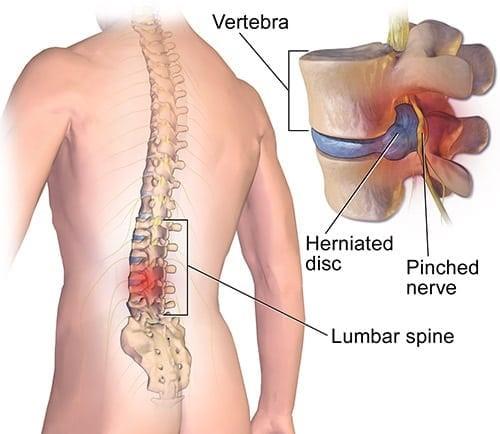
Back pain is one of the most common health issues people face, often impacting daily activities and quality of life. While many cases of back pain can be managed effectively through conservative treatments, some individuals may wonder if surgery is necessary. This blog will explore the types of back surgeries, when they are recommended, the associated risks and benefits, and alternative treatments to consider before opting for surgical intervention.
Understanding When Surgery is Recommended
Surgery for back pain is typically considered when conservative treatments fail to provide relief after several months of care, or when specific conditions pose a significant risk of further injury or complications. Here are some common scenarios where surgery may be recommended:
- Herniated Discs: If a herniated disc is compressing a nerve root and causing significant pain, weakness, or numbness that does not improve with non-surgical treatments, surgery may be indicated.
- Spinal Stenosis: For individuals with spinal stenosis that leads to severe pain, numbness, or weakness in the legs, surgical intervention may help relieve pressure on the spinal cord or nerves.
- Spondylolisthesis: If one vertebra slips over another, causing instability and pain, surgery may be necessary to stabilize the spine.
- Failed Conservative Treatments: When multiple non-surgical treatments, such as physical therapy, medication, and injections, have not provided adequate relief for several months, surgery may be considered.
- Severe Trauma: In cases of severe injury or trauma to the spine that threatens stability or nerve function, immediate surgical intervention may be required.
Types of Back Surgeries
There are various surgical options available for treating back pain, depending on the underlying condition. Here are some common types of back surgeries:
- Discectomy: This procedure involves the removal of the herniated portion of a disc to relieve pressure on the spinal nerves. It is often performed minimally invasively.
- Laminectomy: In this procedure, a portion of the vertebra (the lamina) is removed to create more space in the spinal canal, alleviating pressure on the spinal cord or nerves.
- Spinal Fusion: This surgery involves joining two or more vertebrae together to provide stability to the spine. It may be recommended for conditions like spondylolisthesis or severe degenerative disc disease.
- Foraminotomy: This procedure widens the openings (foramina) where the nerve roots exit the spine, relieving nerve compression.
- Artificial Disc Replacement: In this procedure, a damaged disc is removed and replaced with an artificial disc, allowing for movement while providing stability.
Risks and Benefits of Surgical Treatments
While surgery can provide relief from chronic back pain, it is essential to weigh the risks and benefits carefully.
Benefits:
- Pain Relief: Many individuals experience significant pain relief and improved function following surgery, especially if conservative treatments have been ineffective.
- Improved Quality of Life: Successful surgery can lead to a better quality of life, allowing individuals to return to activities they enjoy.
- Immediate Results: In cases of severe nerve compression, surgery can provide rapid relief from symptoms.
Risks:
- Surgical Complications: As with any surgery, there are risks involved, including infection, bleeding, and adverse reactions to anesthesia.
- Nerve Damage: Although rare, there is a risk of nerve damage during surgery, which could lead to worsening symptoms.
- Failed Back Surgery Syndrome (FBSS): Some individuals may experience persistent pain even after surgery, known as FBSS. This can occur for various reasons, including incorrect diagnosis or additional underlying conditions.
Alternative Treatments to Try Before Surgery
Before resorting to surgery, individuals should consider several alternative treatments, which may provide relief from back pain:
- Physical Therapy: A structured program of exercises and stretches guided by a physical therapist can help strengthen back muscles, improve flexibility, and alleviate pain.
- Chiropractic Care: Chiropractic adjustments can relieve pressure on the spine and improve alignment, potentially reducing back pain.
- Medication: Over-the-counter pain relievers, anti-inflammatory drugs, or prescription medications may help manage pain and inflammation.
- Epidural Steroid Injections: These injections can deliver anti-inflammatory medication directly to the site of nerve compression, providing temporary relief from pain.
- Acupuncture: Some individuals find relief from chronic back pain through acupuncture, a practice that involves inserting thin needles into specific points on the body.
- Lifestyle Modifications: Maintaining a healthy weight, staying active, practicing good posture, and using ergonomic furniture can help prevent and manage back pain.
- Mind-Body Techniques: Techniques such as yoga, meditation, and mindfulness can help individuals manage pain and improve overall well-being.
Conclusion
Deciding whether surgery is necessary for back pain can be challenging. It is crucial to consult with a qualified healthcare professional who can assess your condition and recommend appropriate treatments. While surgery can provide relief for certain conditions, many individuals benefit from conservative treatments and lifestyle modifications. By exploring all available options and understanding the risks and benefits of surgery, you can make an informed decision about your back pain management strategy. Remember, your spine health is essential, and taking proactive steps can lead to a healthier, more active life.

